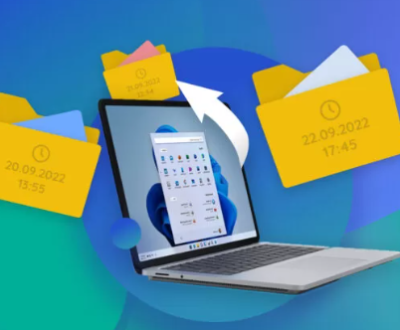When a USB disk isn’t detected by Windows, it can be quite frustrating. This issue can arise from a variety of reasons, ranging from hardware issues to software conflicts. Let’s delve into the possible causes and solutions.
1. Hardware Issues
Faulty USB Port: Sometimes, the issue might be with the USB port itself. Ports can become damaged or dirty over time, causing connectivity problems.
Solution: Try connecting the USB disk to a different port on your computer. If you’re using a USB hub, try connecting directly to the computer instead.
Faulty USB Cable: A damaged or malfunctioning USB cable can prevent the disk from being detected.
Solution: If possible, use a different USB cable to see if that resolves the issue.
Disk Damage: The USB disk itself might be damaged or malfunctioning.
Solution: Test the USB disk on another computer to determine if it’s recognized there. If not, the disk may need professional repair or replacement.
Power Supply Issues: Some USB disks, especially external hard drives, require more power than what a single USB port can provide.
Solution: If your USB disk has a power adapter, make sure it’s properly connected. Alternatively, use a powered USB hub.

2. Driver Problems
Outdated or Corrupt Drivers: USB drivers might be outdated or corrupt, leading to detection issues.
Solution: Update the USB drivers through Device Manager:
Right-click on the Start menu and select Device Manager.
Expand the Universal Serial Bus controllers section.
Right-click on each USB Root Hub or USB controller and select Update driver.
Conflicting Drivers: Sometimes, newly installed software or drivers can conflict with USB drivers.
Solution: Uninstall any recently added software or drivers that might be causing the conflict. You can also use the Driver Rollback feature in Device Manager.
3. Windows Settings
USB Selective Suspend Setting: Windows has a power-saving feature that might suspend USB devices to save energy.
Solution: Disable USB selective suspend:
Open Control Panel and go to Power Options.
Click on Change plan settings for your active power plan.
Click on Change advanced power settings.
Expand USB settings and then USB selective suspend setting.
Set it to Disabled.
Device Not Enabled: Sometimes, the USB device might be disabled in the Device Manager.
Solution: Go to Device Manager, find the USB device, and ensure it’s enabled. Right-click and select Enable if it’s disabled.
4. File System Issues
Corrupted File System: If the USB disk’s file system is corrupted, Windows might not recognize it.
Solution: Use Disk Management to check and repair the file system:
Right-click on the Start menu and select Disk Management.
Locate the USB disk and check its status. If it’s listed as Unallocated or RAW, you might need to format it (note: formatting will erase all data).
Drive Letter Conflict: If the USB disk’s drive letter conflicts with another drive, it may not appear correctly.
Solution: Change the drive letter:
Open Disk Management.
Right-click on the USB disk and select Change Drive Letter and Paths.
Assign a new drive letter that doesn’t conflict with other devices.
5. Software Conflicts
Conflicting Software: Certain software programs or security settings can interfere with USB detection.
Solution: Boot Windows in Safe Mode to see if the USB disk is detected. If it is, a third-party program or security setting may be causing the conflict.
Antivirus or Security Software: Occasionally, antivirus or security software might block USB devices.
Solution: Temporarily disable your antivirus or security software and check if the USB disk is detected.
6. Operating System Issues
Windows Updates: Sometimes, missing Windows updates can lead to detection issues.
Solution: Check for and install any pending Windows updates:
Go to Settings > Update & Security > Windows Update.
Corrupt System Files: Corrupt system files can cause various hardware issues.
Solution: Use the System File Checker (SFC) to repair corrupted files:
Open Command Prompt as an administrator.
Type sfc /scannow and press Enter.
7. External Factors
Operating System Compatibility: Make sure that the USB disk is compatible with your version of Windows.
Solution: Check the manufacturer’s website for compatibility information and updates.
Firmware Issues: Sometimes, the USB disk’s firmware may need an update.
Solution: Visit the manufacturer’s website to check if a firmware update is available for your USB disk.
8. Advanced Troubleshooting
Check Disk Utility: Use advanced disk utility tools to diagnose and repair disk issues.
Solution: Tools like CHKDSK can be used:
Open Command Prompt as an administrator.
Type chkdsk X: /f (replace X with your USB disk’s drive letter) and press Enter.
BIOS/UEFI Settings: Sometimes, USB ports can be disabled in BIOS/UEFI settings.
Solution: Restart your computer and enter BIOS/UEFI settings. Ensure that USB ports are enabled.
Troubleshooting a USB disk that Windows doesn’t detect involves a systematic approach to identify and resolve the underlying issue. Start with basic hardware checks, move on to driver and software troubleshooting, and consider system-level issues if the problem persists. By following these steps, you can often resolve the issue and restore functionality to your USB disk.
About us and this blog
Panda Assistant is built on the latest data recovery algorithms, ensuring that no file is too damaged, too lost, or too corrupted to be recovered.
Request a free quote
We believe that data recovery shouldn’t be a daunting task. That’s why we’ve designed Panda Assistant to be as easy to use as it is powerful. With a few clicks, you can initiate a scan, preview recoverable files, and restore your data all within a matter of minutes.
Subscribe to our newsletter!
More from our blog
See all postsRecent Posts
- How to restore deleted images 2025-06-30
- How to restore a deleted file on windows 2025-06-30
- is there any way to restore deleted photos 2025-06-30

 Try lt Free
Try lt Free Recovery success rate of up to
Recovery success rate of up to









